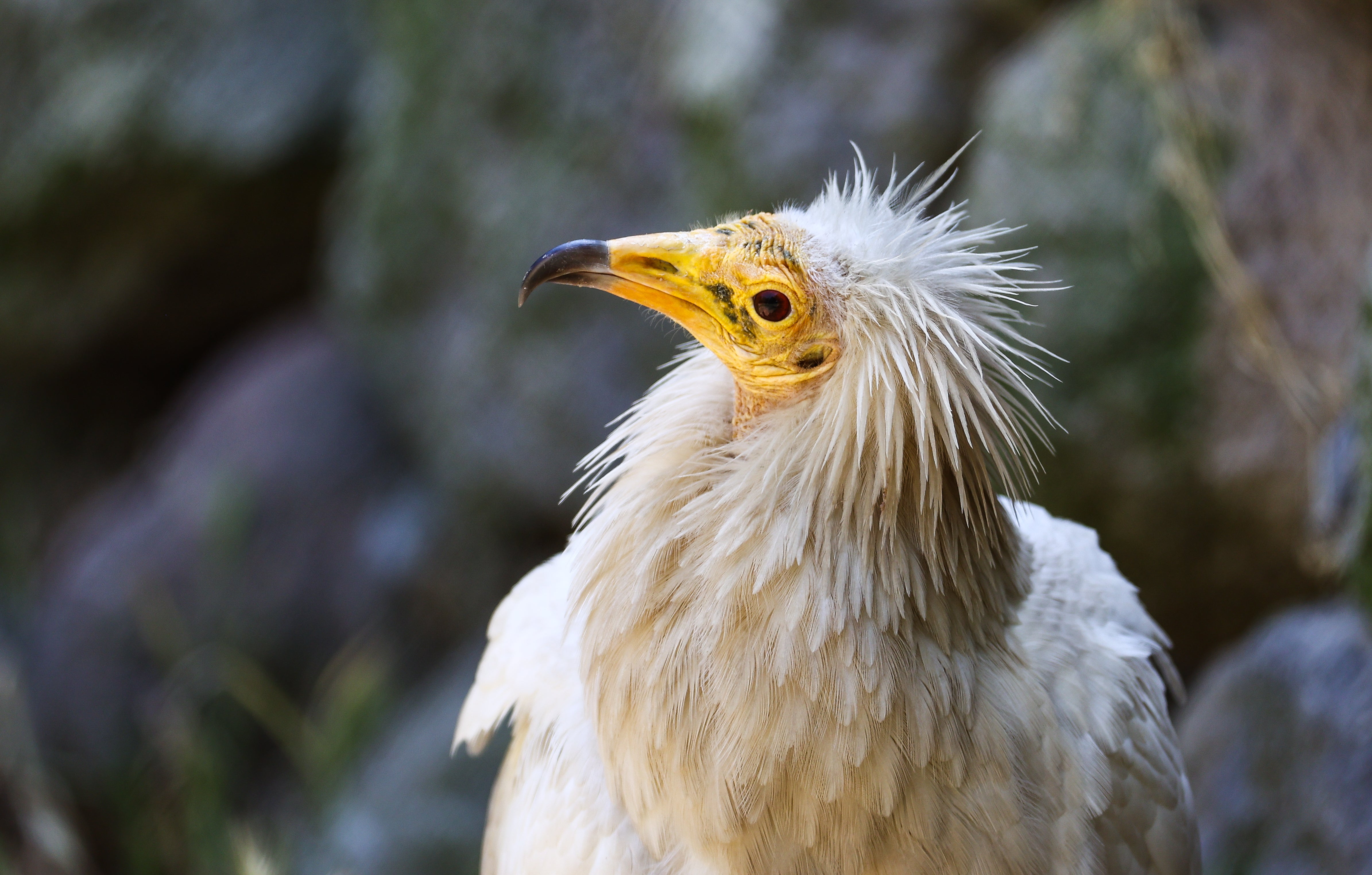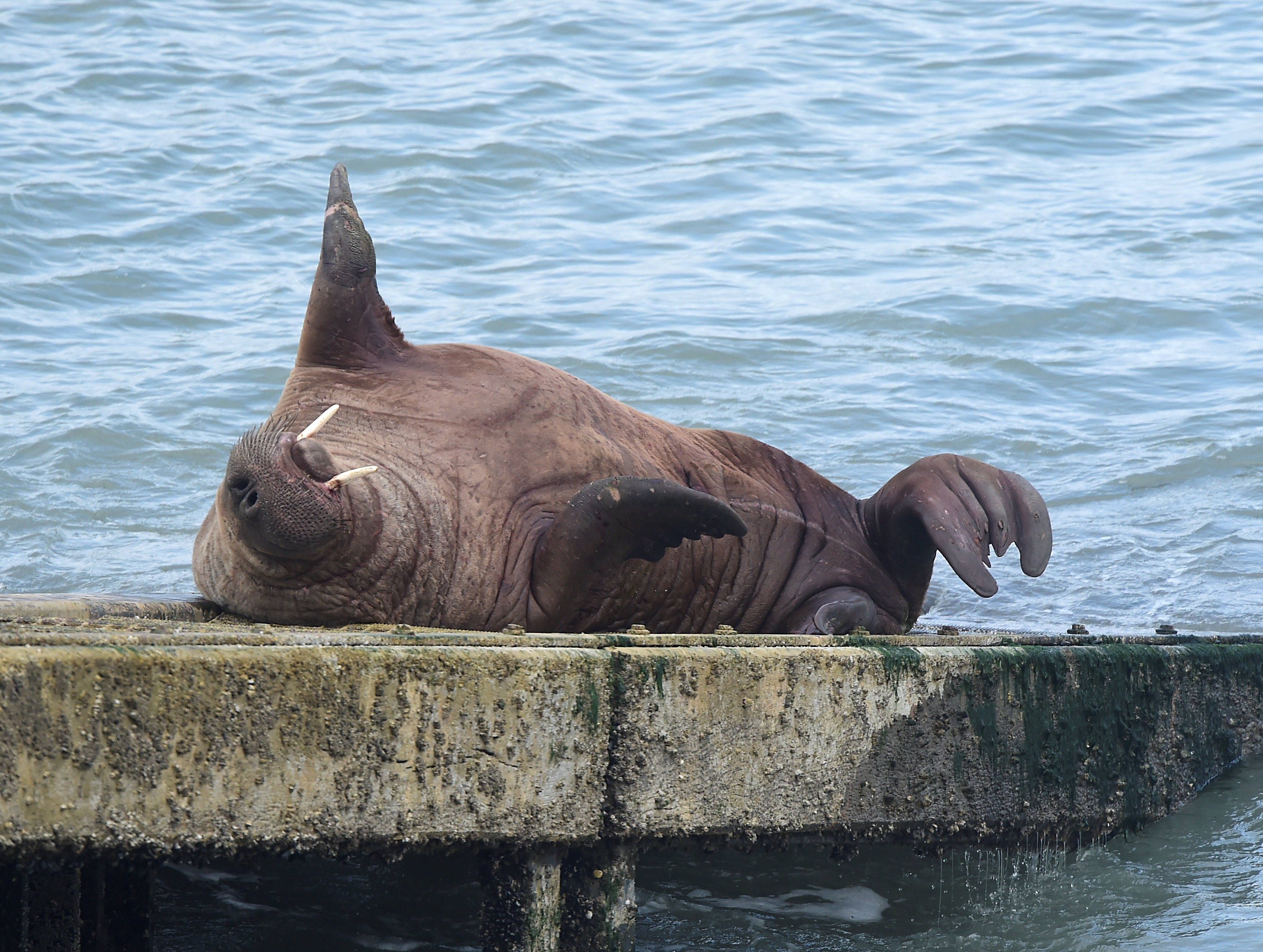Orchids, vultures and walruses: The rare species turning up in the UK
Impacts of the climate crisis and human activity are among key reasons non-native species land on our shores

In the last week, two particularly rare species have been seen in the UK.
First, on the Isles of Scilly, off the Cornish coast, an Egyptian vulture was spotted flying and photographed perching in a tree. It is believed to be the first time in 150 years the creature has been seen in British skies.
And secondly, a colony of orchids believed to be extinct in the UK, was found growing on the roof of an office block in the City of London.
The unusual arrivals have both caused a sensation among naturalists. The last time the orchid was seen growing in the UK was in 1989, and the colony was accidentally destroyed due to land mismanagement.
The arrival of rare species of plants and animals can be due to a variety of reasons, including natural fluke (it has been suggested the orchid seeds could have been brought up from Africa by the same air currents which bring Saharan dust to Britain), as well as the impacts of the climate crisis and human activity.

But which other unexpected visitors has the UK hosted recently?
The RSPB’s Martin Fowlie told The Independent: “The recent Egyptian vulture was the first occurrence for 150 years, so a pretty rare event. This was hot on the heels of last year’s visiting bearded vulture that spent time in the Peak District before heading back to the continent.”
He said there had also been a number of smaller rare birds in the UK in recent weeks including a sulphur-bellied warbler on Lundy, off the north coast of Devon, and a Pacific Swift in Northumberland.
“These will be as a result of migratory journeys gone wrong,” Mr Fowlie said.
“The climate crisis is changing and will continue to change species’ distributions and we can expect to see more southerly species occurring more regularly over the coming years.”
Other birds which have been seen in the UK, include the exotic hoopoe, of which around 100 are seen in the country each year, as well as red-necked stints and white-tailed lapwings, according to website Rare Bird Alert.
The impacts of the climate crisis have also meant the great white egret – a dazzling type of heron – has become increasingly common across the UK, and from 2021 will no longer be classed as a rare bird.
The species was previously considered an exotic visitor to British shores, and in 1970 as few as 150 were recorded across the whole of Europe.
But in 2020, the great white egret was seen regularly by UK bird watchers. It was reported more than 8,000 times in almost every part of England and Wales, including in 2,300 new locations.
As well as plants, and birds, unexpected mammals have also made headlines in the UK. Last month a young minke whale swam over 50 miles up the Thames, where it sadly died.
In 2018, a beluga whale – usually an Arctic-dwelling species – spent several months living in the Thames estuary, and became affectionately known as Benny.

Two months ago an even more unexpected creature arrived on our shores: a massive walrus, the size of a cow, surprised people when it was spotted on rocks of County Kerry in Ireland, and then days later was seen off the coast of Pembrokeshire in Wales.
Join our commenting forum
Join thought-provoking conversations, follow other Independent readers and see their replies
Comments
Bookmark popover
Removed from bookmarks